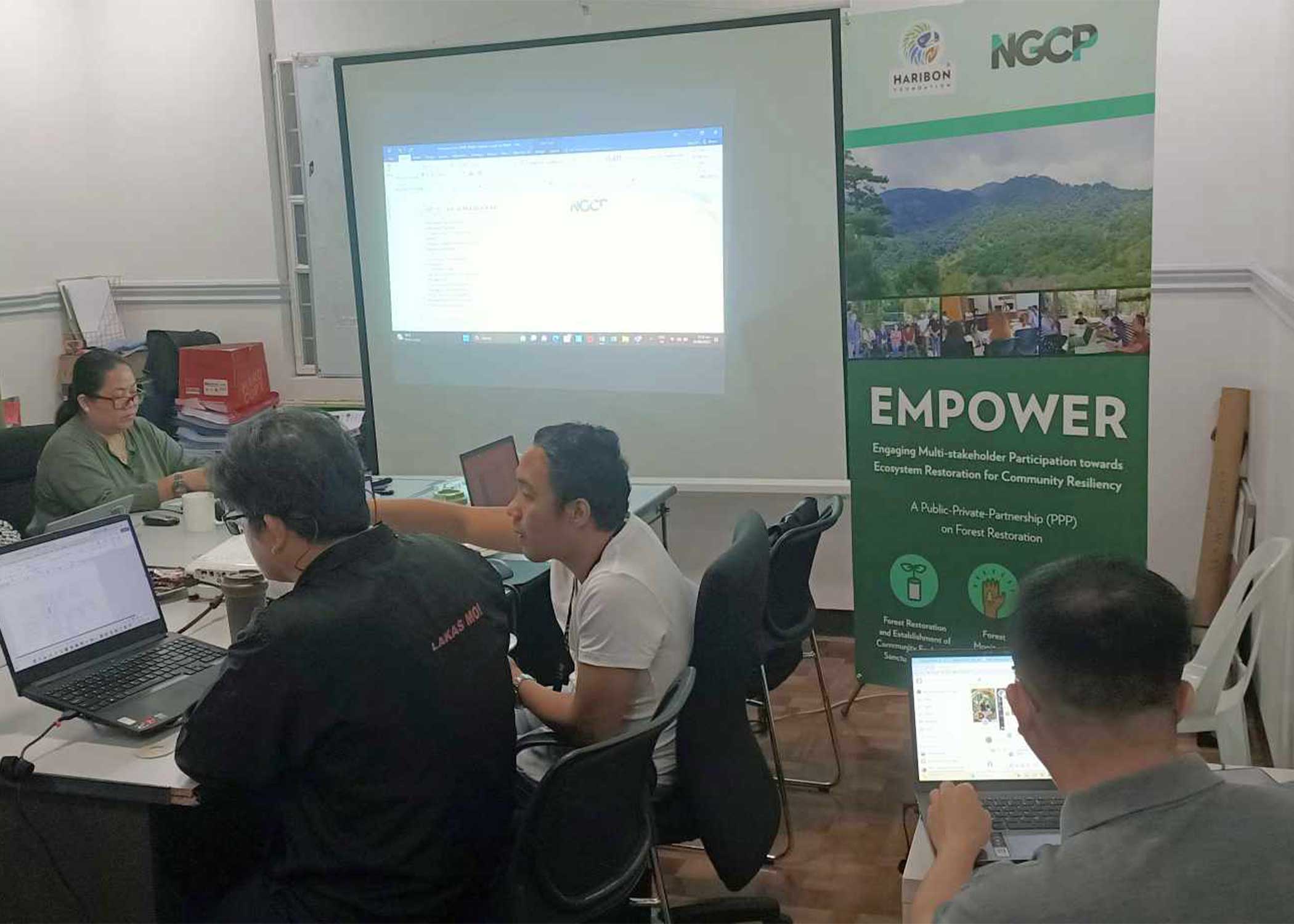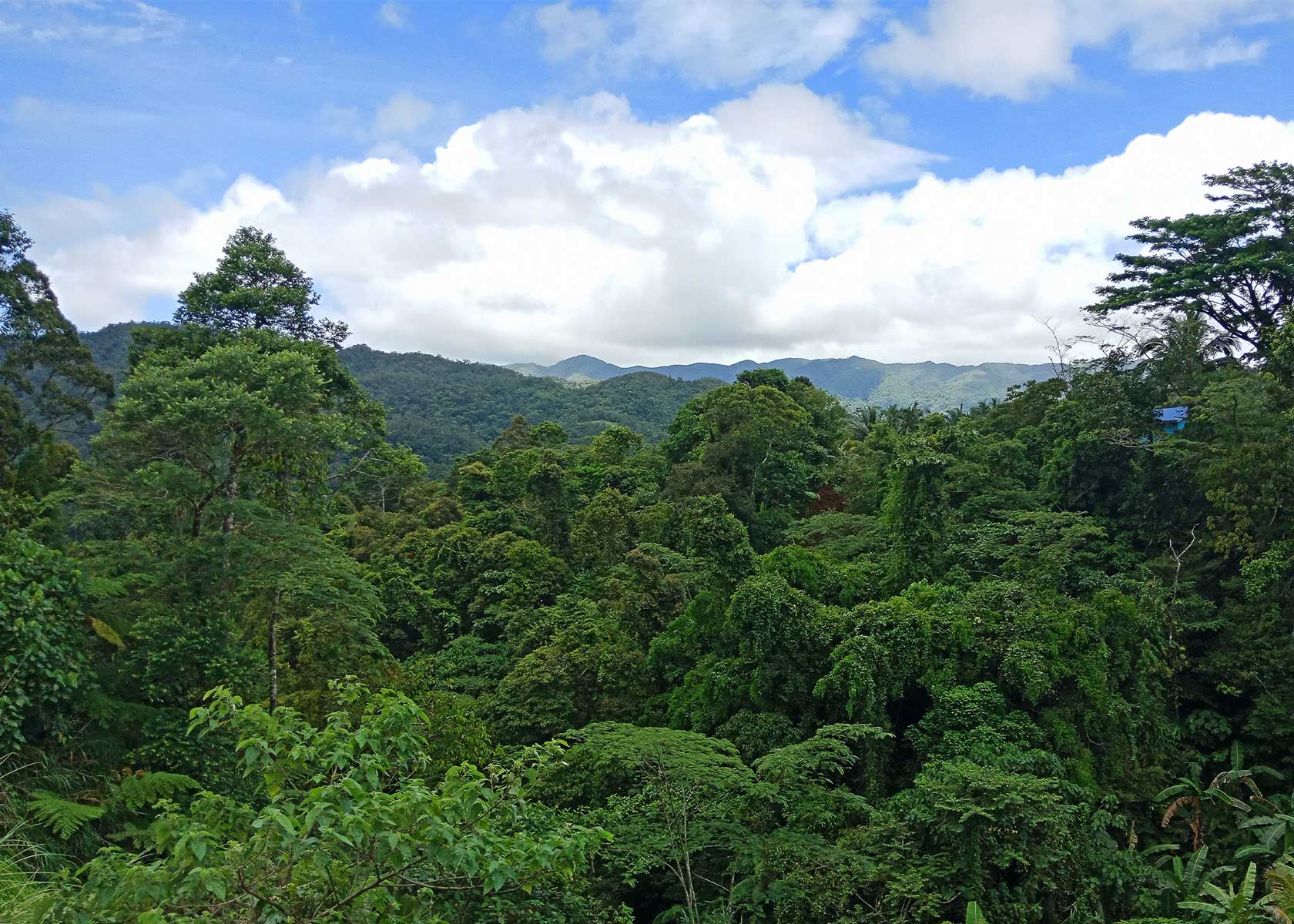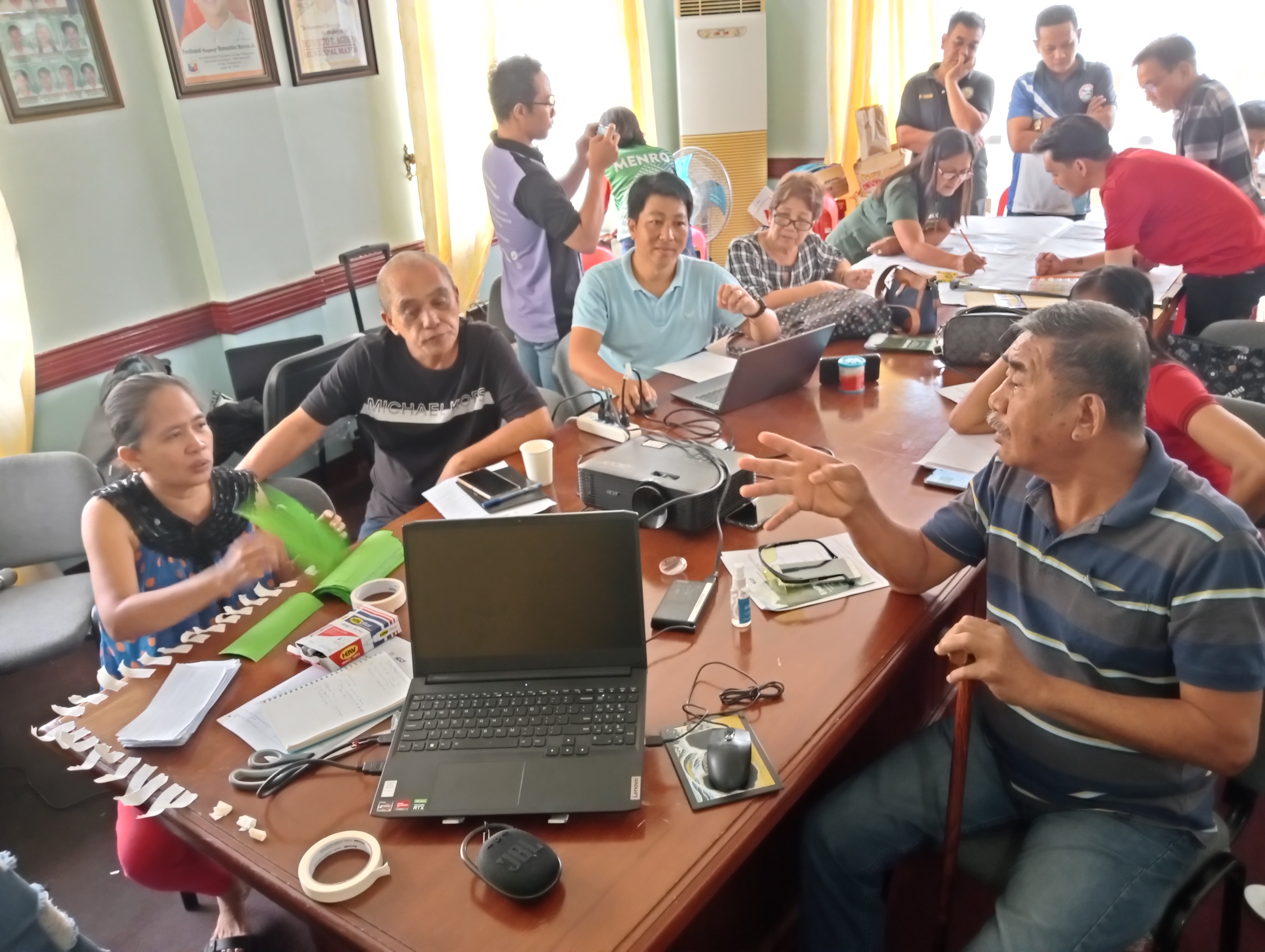Empower
Engaging Multi-stakeholder Participation towards Ecosystem Restoration for Community Resiliency Public-Private-Partnership (PPP) on Forest Restoration
(EMPOWER)
FUNDED BY

About the Project
The need for sufficient forest cover is inevitable. Current and future generations depend on forest services such as food, water, clean air, electric power, and more. For this reason, forest restoration has become a major thrust of not only the government, but also of private institutions who provide basic needs for the people.
The corporate sector is making an effort aligned with the Philippine government’s programs in providing basic services to the public. One of which is the National Grid Corporation of the Philippines (NGCP), the operator of the country’s state-owned power grids that transmit gigawatts of power to even the most remote areas in the Philippines. As NGCP performs its mandate, it partners with HARIBON Foundation as it takes importance of forests and the empowerment of local stakeholders and communities into consideration.
EMPOWER aims to achieve sustainable development where different parties collaborate for the attainment of benefits for all. The HARIBON Foundation and NGCP can mutually achieve their missions through this project, with the Department of Environment and Natural Resources (DENR), management boards (e.g., Protected Area Management Board, watershed council), and the local government units (LGUs).
The corporate sector is making an effort aligned with the Philippine government’s programs in providing basic services to the public. One of which is the National Grid Corporation of the Philippines (NGCP), the operator of the country’s state-owned power grids that transmit gigawatts of power to even the most remote areas in the Philippines. As NGCP performs its mandate, it partners with HARIBON Foundation as it takes importance of forests and the empowerment of local stakeholders and communities into consideration.
EMPOWER aims to achieve sustainable development where different parties collaborate for the attainment of benefits for all. The HARIBON Foundation and NGCP can mutually achieve their missions through this project, with the Department of Environment and Natural Resources (DENR), management boards (e.g., Protected Area Management Board, watershed council), and the local government units (LGUs).
Overall Goal of the Project
Help establish ecological stability and further empower key stakeholders in areas of operation of the National Grid Corporation of the Philippines (NGCP) through forest restoration, capacity building, and sustainable livelihood opportunities.
Project Components and Strategies
HARIBON shall implement Rainforestation (RF) Technology where community partners propagate native trees to restore degraded portions of protected areas and enrich portions that need additional vegetation.
- A native tree and fruit nursery will be established with the community in each restoration site.
- Community partners will obtain income from the seedlings produced, and maintenance income for safeguarding the new forests.
- Communities’-Ecological Sanctuaries (CES) will be established at the barangay level to raise public awareness on biodiversity.
The Citizen’s Action for Monitoring Ecosystems (CAME) is a simple monitoring and reporting system developed by HARIBON to assess the actual condition of the forest ecosystem through crowdsourced data from local communities.
- A CAME Team for EMPOWER shall be composed of Bantay Gubat volunteers and multi-stakeholder representatives from the LGU, DENR, and civil society organizations.
- The team will track and respond to the various threats and understand the status of the forest ecosystem with the Ka-Patrol android application.
This project component will assist in the capacity building initiatives of the whole Protected Area Management Board (PAMB).
- Guidance and feedback will be provided to address issues and concerns that are vital in updating a Protected Area Management Plan (PAMP).
- A Governance Assessment of Protected and Conserved Areas (GAPA) shall be conducted. GAPA appraises the existing protected area governance, identifying strengths, challenges, and ideas for action.
Updates from the field
Forest Restoration Sites within Protected Areas

Pantabangan-Carranglan Watershed Forest Reserve (PCWFR)
Location: PCWFR is located within three provinces: Nueva Ecija, Nueva Vizcaya, and Aurora.
94,170.92 hectares
History: PCWFR was declared as watershed forest reserve by virtue of Proclamation No. 561 issued on May 21, 1969. It is an initial component of Republic Act 7586 or National Integrated Protected Areas System (NIPAS).
Importance: PCWFR is drained by two main river systems: the Carranglan River and the Pampanga River that drain to the Pantabangan Dam and is referred to as the Upper Pampanga River Basin.
94,170.92 hectares
History: PCWFR was declared as watershed forest reserve by virtue of Proclamation No. 561 issued on May 21, 1969. It is an initial component of Republic Act 7586 or National Integrated Protected Areas System (NIPAS).
Importance: PCWFR is drained by two main river systems: the Carranglan River and the Pampanga River that drain to the Pantabangan Dam and is referred to as the Upper Pampanga River Basin.

Aurora Memorial National Park
(AMNP)
(AMNP)
Location: AMNP is located within the Sierra Madre Mountain Range, straddling the municipalities of Maria Aurora and San Luis in Aurora province and the municipality of Bongabon in Nueva Ecija.
6,516.93 hectares
History: The AMNP was originally established in 1937 as the Baler-Bongabon National Park through Presidential Proclamation (PP) No. 220. PP No. 130 issued in 1949 changed the name of the park to Aurora Memorial National Park. AMNP was also an initial component of NIPAS.
Importance: AMNP is a key biodiversity area and an Important Bird Area. Twenty threatened species of fauna have so far been recorded3, including the critically endangered Philippine Eagle. 16 floral species are categorized as threatened4. Rafflesia manillana, believed to be the smallest Rafflesia species in the world, is among the fascinating plants found there.
6,516.93 hectares
History: The AMNP was originally established in 1937 as the Baler-Bongabon National Park through Presidential Proclamation (PP) No. 220. PP No. 130 issued in 1949 changed the name of the park to Aurora Memorial National Park. AMNP was also an initial component of NIPAS.
Importance: AMNP is a key biodiversity area and an Important Bird Area. Twenty threatened species of fauna have so far been recorded3, including the critically endangered Philippine Eagle. 16 floral species are categorized as threatened4. Rafflesia manillana, believed to be the smallest Rafflesia species in the world, is among the fascinating plants found there.

Bicol Natural Park
(BNP)
(BNP)
Location: Bicol Natural Park falls within the Southern Luzon biographic zone and Greater Luzon faunal region.
5,466.35 hectares
History: It was first proclaimed as “National Park” by virtue of Proclamation No. 655 and 657 issued in 1934 and 1940. In Proclamation No. 431 issued on December 29, 2000, the Park was proclaimed as “Natural Park”.
Importance: It is the only lowland dipterocarp forest in the Philippines, and is home to 190 species of various terrestrial wildlife including the endangered Gray Monitored Lizard (Varanus olivaceus), the rare Woodworth frog (Limnonectes woodworthi) and the Luzon Hornbill (Penelopides manillae).
5,466.35 hectares
History: It was first proclaimed as “National Park” by virtue of Proclamation No. 655 and 657 issued in 1934 and 1940. In Proclamation No. 431 issued on December 29, 2000, the Park was proclaimed as “Natural Park”.
Importance: It is the only lowland dipterocarp forest in the Philippines, and is home to 190 species of various terrestrial wildlife including the endangered Gray Monitored Lizard (Varanus olivaceus), the rare Woodworth frog (Limnonectes woodworthi) and the Luzon Hornbill (Penelopides manillae).
Haring E-bon
Get inspiration at your fingertips. Stay up-to-date with the community’s latest conservation news and stories from the field by signing up for HARIBON®'s e-newsletter.











